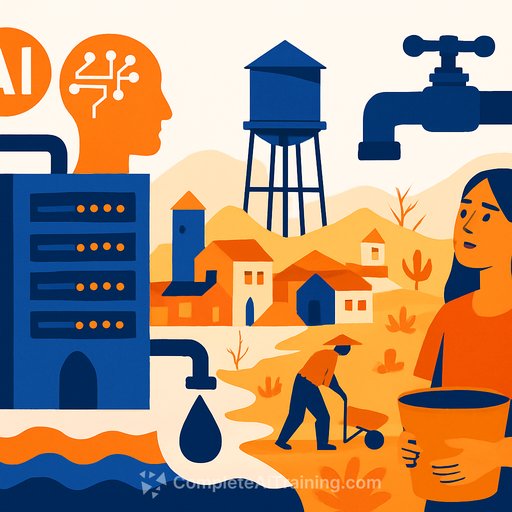AI’s Backyard: The 21st-Century Gold Rush for Data Centers
Internet giants like Microsoft, Amazon, and Google are rapidly expanding their footprint by building massive data center complexes in Mexico, Chile, and Spain. These facilities are the backbone supporting the soaring demand for artificial intelligence (AI) processing power, but their presence is reshaping local communities and resources in unexpected ways.
In rural La Esperanza, Mexico, a mobile classroom bearing the Microsoft logo sits unused beside a taco stand. The locals, including Mrs. Hortensia, express frustration that the promised community benefits, such as health clinics or meaningful educational programs, have not materialized. Meanwhile, just a mile uphill, Microsoft’s sprawling data centers hum nonstop, demanding vast amounts of energy and water.
Water Scarcity and Data Center Expansion in Querétaro
Querétaro, one of Mexico’s driest states, has become a hotspot for hyperscale data centers. Microsoft, Amazon Web Services (AWS), and Google have collectively launched seven data center units here in less than two years. Yet, the local government keeps many operational details, especially regarding water and energy consumption, under wraps.
Water is a critical and scarce resource for these data centers. Despite the dry climate and growing drought conditions, these complexes rely heavily on groundwater for cooling. Records reveal that Microsoft alone holds permits to extract 25 million liters of water annually near the Vesta industrial park. This water comes from the overexploited San Juan del Río Valley aquifer, which already faces a deficit of nearly 57 million liters.
Local communities like La Esperanza and Viborillas are bearing the brunt of this extraction. Residents report frequent water rationing lasting up to two weeks, with springs and wells drying up. Despite a joint Microsoft and U.N.-Habitat social assessment highlighting the water crisis, no substantial measures have been taken to address these concerns.
Security and Secrecy
Data centers operate under tight security: surveillance cameras, multiple fences, and private guards restrict access. The secrecy extends to how these facilities are cooled during intense heat periods, with local officials unable or unwilling to obtain detailed information. This opacity makes it difficult to assess the true environmental impact on nearby communities.
Community Resistance in Santiago, Chile
The story is similar in Chile, where Amazon Web Services plans three new data centers around Santiago. Residents in La Pincoya, a working-class neighborhood, have actively opposed the construction of high-voltage power lines required to supply these facilities. Their protests included murals, public meetings, and vocal rejection at hearings, arguing that the company should build such projects in wealthier areas if they were truly beneficial.
Behind the scenes, Amazon appears to be using complex corporate structures to acquire land discreetly. This includes the purchase of adjacent plots and strategic withdrawal of controversial power line projects from public records, fueling suspicion among locals about the company’s true intentions.
Google faced similar pushback in Cerrillos, Santiago’s southern outskirts. After years of protests led by local activist groups, a Chilean environmental court ruled Google’s largest Latin American data center project irregular due to inadequate assessment of its impact on the city’s water aquifer amid a worsening climate crisis. Google has since withdrawn the original project but may propose a scaled-down version using air-cooling technology, which still leaves community activists unconvinced.
Implications for Real Estate and Construction Professionals
- Water Resource Management: The expansion of hyperscale data centers intensifies competition for water in already stressed regions. This adds a new layer of complexity for developers and planners when evaluating land viability.
- Community Impact and Relations: Data centers often locate in less affluent neighborhoods, sparking resistance due to perceived environmental and social costs without tangible local benefits. Managing community relations will be crucial.
- Regulatory Transparency: Obtaining clear information on infrastructure, environmental permits, and resource consumption is challenging. Anticipate increased scrutiny and demand for transparency from governments and residents.
- Infrastructure Needs: High-voltage power lines and large-scale cooling systems require substantial real estate and utility coordination. Integrating these into urban or semi-rural environments demands careful planning.
For professionals involved in real estate development and construction, understanding the demands and impacts of this new wave of hyperscale facilities is vital. These data centers are not just buildings—they are massive, resource-intensive infrastructures shaping local economies and environments.
Those interested in acquiring AI-related skills or learning more about the technology behind these data centers can explore specialized courses at Complete AI Training.
Your membership also unlocks:






